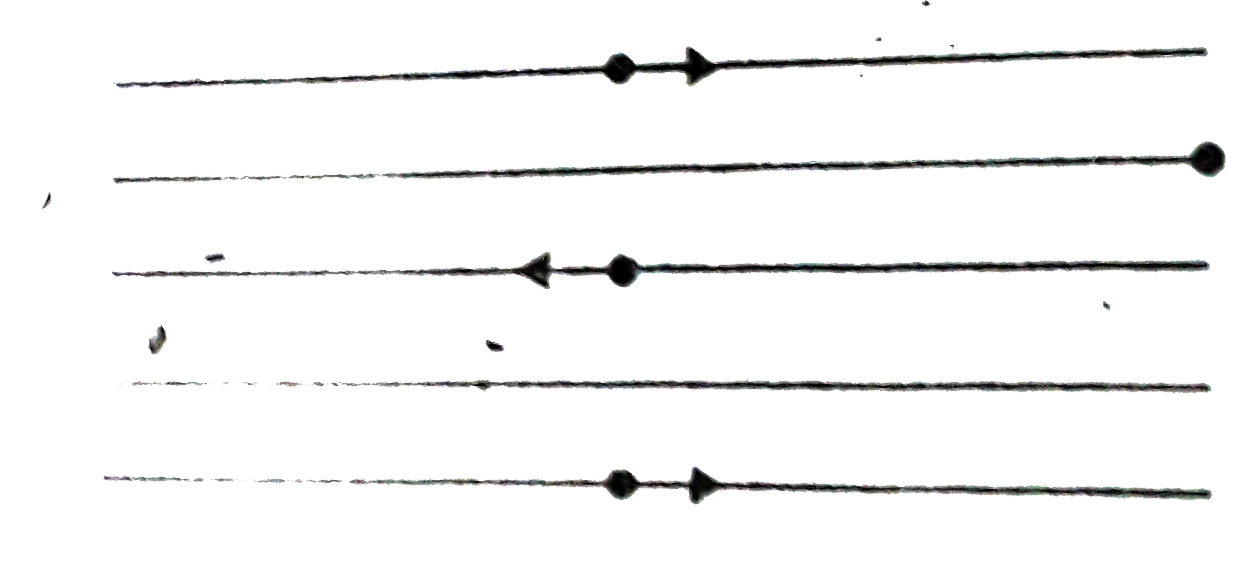At two particular closest instants fo time t1 and t2, the displacemets of a particle performing SHM are equal. At these instants
instantaneous speeds are equal.
instaneous accelerations are equal.
phases of the motion are unequal.
all of the above.
The correct Answer is:D
Step by step video, text & image solution for At two particular closest instants fo time t_(1) and t_(2), the displacemets of a particle performing SHM are equal. At these instants by Physics experts to help you in doubts & scoring excellent marks in Class 11 exams.
Updated on:21/07/2023Topper's Solved these Questions
- OSCILLATIONSBOOK - NARAYNACHAPTER - OSCILLATIONSEXERCISE - LEVEL -I (C.W)
34 Videos
- OSCILLATIONSBOOK - NARAYNACHAPTER - OSCILLATIONSEXERCISE - LEVEL -II (C.W)
36 Videos
- OSCILLATIONSBOOK - NARAYNACHAPTER - OSCILLATIONSEXERCISE - EXERCISE - IV
41 Videos
- NEWTONS LAWS OF MOTIONBOOK - NARAYNACHAPTER - NEWTONS LAWS OF MOTIONEXERCISE - PASSAGE TYPE QUESTION
6 Videos
- PHYSICAL WORLDBOOK - NARAYNACHAPTER - PHYSICAL WORLDEXERCISE - C.U.Q
10 Videos
Similar Questions
A particle executing SHM completes 1200 oscillations per minute and passes through the mean position with a velocity of 31.4ms−1. Determine the maximum displacement of the particle from the mean position also obtain the displacement equation of the aprticle if its displacemet be zero at the instant t=0.
View SolutionWhen a particle is performing SHM of time period T1 the force acting on it is F1 for a certain displacement. When the same particle is performing SHM of time period T2 the force acting is F2 for the same displacement. What will be the time period of the particle when a combined force of F1 and F2 produce the same displacement in SHM is different cases?
View Solution
Knowledge Check
At two particular closest instant of time t1 and t2 the displacements of a particle performing SHM are equal. At these instant
Ainstantaneaous speed are equalBinstantaneous acceleration are equalCphase of the motion are unequalDkinetic energies are equalThe coordinates of a particle moving in XY-plane at any instant of time t are x=4t2,y=3t2. The speed of the particle at that instant is
A10 tB5 tC3 tD2 tTime period (T) and amplitude (A) are same for two particle which undergoes SHM along the same line. At one particular instant one particle is at phase3π2and the other is at zero, while moving in the same direction. Find the time at which they will cross each other
A4T/2B3T/8C3T/4D3T/7
In the figure, dots and arrows show the position and the velocity of a paritcle executing SHM. What are the phases at the five indicated instants when the position at time t is given by
x=Asin(ωt+ϕ)

View SolutionA particle startsits SHM at t=0 . At a particular instant on its way to extreme position , x=A2 . Find the time taken by the particle to come back to this point after passing through the extreme position.
Hint :t1= time taken to go from x=0 to x=A2
t2= time taken to go to extreme position and come back to mean position =T2
Required time =T2−t1
View SolutionThe position x of a particle varies with time t as x=at2−bt3. The acceleration at time t of the particle will be equal to zero, where (t) is equal to .
View SolutionThe displacement of a particle performing a S.H.M. is given by x=12cos(ωt+α)cm. If at time t, the displacement of the particle is 6 cm, them the phase of the particle at that instant is
View SolutionA particle is moving such that its position vector varies with time as →r=(1−αt)t→A, where α and →A are constant quantities. At t=0, the particle is at a position O. At some later instant 't0', the particle is again at O. Velocity of the particle at the instant t0 is:
View Solution